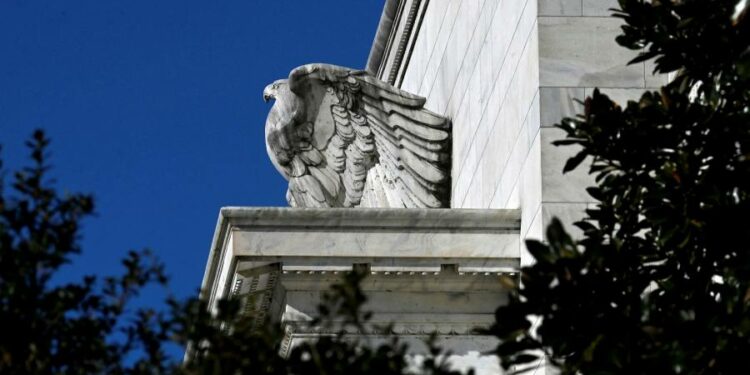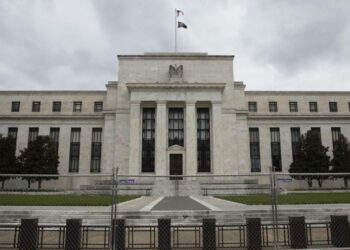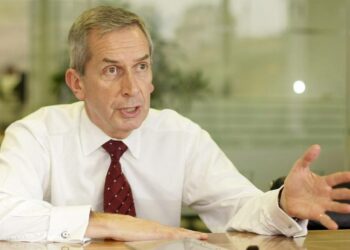The writer is an FT contributing editor
These are not normal times. Inflation measures in the US are higher than they’ve been in four decades. When the Federal Reserve meets next week, however, it’s likely to begin what it calls “normalisation”: shedding as many assets from its $9tn balance sheet as it can.
Once completed, normalisation will allow the Fed to go back to using its tools the old way: it will raise or lower interest rates, to discourage or encourage lending.
It’s hard to overestimate the appeal of normalisation within the Fed. Central bankers are not like athletes. They do not enjoy stressful moments of high performance. They are happiest when no one else is thinking about them at all, when no one can accuse them of having done something wrong or — far worse — of having done something political.
Normalisation, for the Fed, means a retreat from politics to the safe, blameless behaviours described in macro textbooks. This is an understandable urge, but it requires that policymakers deceive themselves in two ways.
First, after the last two crises, balance sheets are now a normal policy tool. The Fed will have a very large balance sheet for a very long time; so long as it exists, it is functioning as a tool. And second, every choice the Fed makes — whether it holds, sells or swaps assets — helps some people more than others. All monetary policy tools have distributional consequences. Money is inherently political.
In a review before the pandemic, policymakers at the Fed decided that when another downturn came, they would do what they had done after the financial crisis. They would drop interest rates, then buy any assets they had to keep financial markets functioning. Once rates got to zero, they would start buying Treasuries, methodically, until conditions improved.
Once the pandemic arrived, that’s almost exactly what they did. When credit markets seized up, the Fed was creative and urgent, working with the US Treasury to guarantee markets for money market mutual funds, commercial paper, corporate bonds and municipal bonds. It backstopped emergency loan programmes for large and small businesses. Then, following its plan, once interest rates hit zero, the Fed methodically began buying $3.1tn in Treasuries and $1.4tn in mortgage-backed securities.
In a meeting well before the pandemic, policymakers agreed that after an emergency had passed, they would rather buy Treasuries, to avoid the appearance of what they called credit allocation — the political act of deciding who gets credit, and who doesn’t. Now, as it begins to normalise, the Fed has confirmed that it wants to return to a balance sheet with Treasuries and little else. Buying mortgages, for example, was a way to allocate credit to the housing market, a political act. About a third of Americans rent and they are far more likely to be young and single, and black and Hispanic.
Buying Treasuries, however, was also a political choice. There is some argument, even among central bankers, about how buying trillions of dollars of government debt helps lower unemployment. It might work through the “signal channel”, as a sign to investors that the Fed intends to keep rates low for a while. It might work by driving down returns on 10-year Treasuries and encouraging riskier long-term investments.
Or it might work through the “supply channel” — buying a lot of Treasuries lowers the return on Treasuries, encouraging investors to buy anything else. Indeed, that is what it seems to have done. If you held any kind of asset before the pandemic — a stock, a bond, a house, a start-up looking for another round of venture capital funding — the returns over the past two years have been amazing.
The good news for the Fed is that buying a lot of Treasuries is not credit allocation. The bad news is that it is return allocation. If you didn’t own an asset, you didn’t get the return. Only half of American families hold stocks and bonds in a retirement account. Buying both mortgages and Treasuries were political acts.
The Fed doesn’t have to get back to just having Treasuries on its balance sheet; it is choosing to. A 2020 paper by Fed researchers, for example, pointed out that it was possible under existing law for the Fed to provide banks with low-cost loans on the condition that they lend to businesses and consumers. The Fed does this in periods of market stress, the researchers pointed out, but not as a normal tool, to encourage employment — the “political economy” risks were too great. The Fed can’t be seen too often to encourage lending to people and businesses, because it might then be accused of encouraging lending to people and businesses.
As it normalises, the Fed will probably begin another extended period of self-examination, in preparation to employ its balance sheet in the next crisis, and the downturn that will follow. When it does, it might help to remember that Fed policy tools aren’t laws of physics that must be obeyed. They are choices. And they are always political.











